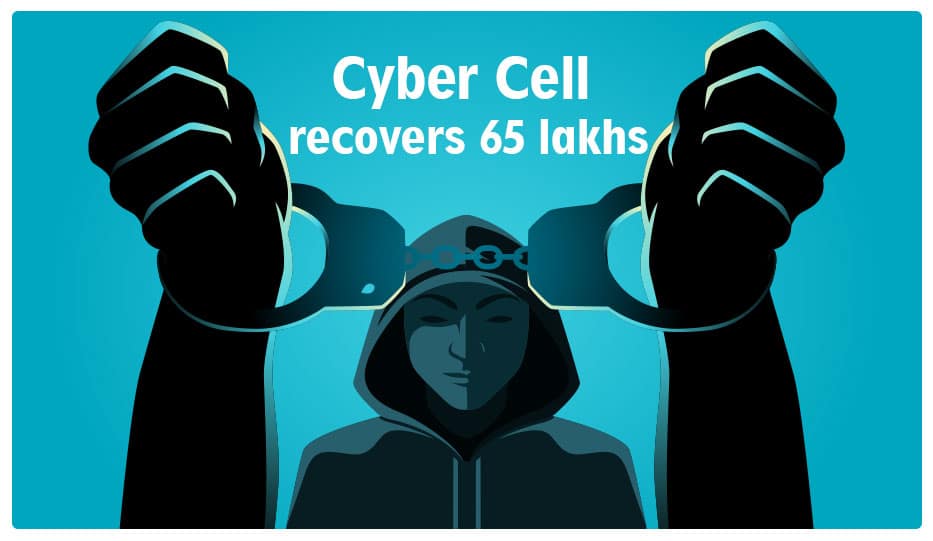
Cyber Cell Recovers 65 lakhs Lost To Invoice Fraud
With all the negativity in the news, it is cheering to finally come across a positive event. This particular case study is a useful representative of business email compromise, and it worth studying. But moreover, you can learn from this case how well-timed intervention can reverse the damage intended by a cyber criminal. The swift decisions taken by the Pimpri-Chinchwad Municipal Corporation (PCMC), Pune Maharashtra – Cyber Cell in the recent invoice fraud case (which we will get to, soon enough) are indicative of the progress made by cyber divisions in India. It also demonstrates how certain tools and services have to be in your security arsenal if you don’t want to get caught in such messy situations in the first place.
A Massive Invoice Fraud Case
In the month of March 2020, a city-based company located in the Pimpri Chinchwad area near Pune got tricked into channelling its billed amount to a fraudulent bank account. On 20th March, the unnamed company wired the amount of Rs 65 Lakhs as per the invoice it received from an email account that was very similar to one of its German business associates. After waiting for the tentative period it typically takes for such transactions to go through, the company in question contacted the German business and asked for a confirmation of the payment. The bemused German company reported back saying it had never sent the invoice in the first place, neither had it received the amount. Immediately, the company went to the police.
A full-fledged investigation, headed by DCP Sudhir Hiremath and Senior Inspector Sudhakar Kate, took effect. The police, in conjunction with the cyber cell, promptly tracked down the bank account mentioned in the fake email. They froze the transaction in concern. Following an inquiry, the bank officials returned the money, which was safely deposited back to the victim company. The actions of the law enforcement agencies were very commendable, seeing as they had managed to recover the amount despite the full restrictions of the ongoing lockdown.
The Making of An Invoice Fraud
The primary phase of such an attack is Business Email Compromise (BEC). In a BEC attack, the intruder monitors the email communication between two organizations or even within a single organization. He/she understands the workings, mannerisms and type of communication that a company engages in. When the timing is right, the intruder simply injects themselves into the conversation thread. Often, the hacker will send an email to the employees of an organization posing as a decision maker. The email might instruct the victim to channel funds into their own bank account.
But in this particular case, a second phase accompanied the BEC: forged emails. In this, the perpetrator of the crime studies the format, headers, footers etc. of the exchanged emails. Once the hacker is comfortable with the style, he/she attempts to replicate it. Then they send emails from his own account, masking his account with a legitimate one. In the PCMC case too, the criminals duplicated the invoice format of the German company. Then they simply sent the fake invoice to their chose victim, by just simply putting in their own bank account.
It was fortunate that the amount was so substantial. It prompted the company to ask for a confirmation. The PCMC cyber cell could reverse the transaction due to this small lucky step.
How can you prevent this from happening to you?
Invoice fraud is one of the major issues bothering organizations, resulting in huge losses. In 2017 the Justice department announced that Google and Facebook had lost $100 million to a scammer’s fake invoices.
Invoice fraud occurs when targeted businesses receive fake invoices, asking the company to pay the criminal’s own bank account. The invoices are exact lookalikes of a genuine supplier invoice.
Logix offers Invoice Fraud Protection Service in which a secure protocol is followed between supplier & buyer. Our service sends invoices using a designated email id from the supplier. This email is routed via Invoice Fraud Protection Gateways.
How does it work –
- Invoice fraud protection gateway enforces – Right Protection on the Invoice. It will have view and print rights, and a water mark to make it tamper proof.
- Only the intended buyer email id can open the email, no one else can.
- Buyer will pay only for those invoice which have water mark & are in rights protected format.
Only the above process can eliminate the element of fraud between the buyer & supplier.